Blood Secrets: Chronicles of a Crime Scene Reconstructionist Read online
Page 21
“Well, I hate to see a woman cry,” he said kindly. He offered to drive her to a small town halfway to Shiprock.
Another man walked out of the store clutching a pack of cigarettes and joined them. Lee realized he was a friend of the man offering her a ride. The apparent Good Samaritan was twenty-seven-year-old Robert “Bobby” Fry. His pal was twenty-four-year-old Leslie “Les” Engh.
Betty Lee was reluctant to accept a ride from two strange men, but what else could she do? No one was answering the phone, and she was thirty miles from home across barren desert countryside.
The three piled into Fry’s Ford Aspire and Fry headed north, while Lee told Engh how her friends had abandoned her. They had driven only a few miles out of town onto County Road 6480 when Fry veered unexpectedly into an unpaved turnoff and stopped the car in a deserted stretch that locals called Twin Peaks. Already apprehensive, Lee jumped out and started to hurry away.
“Where are you going?” Fry called. “I just have to pee.”
She ignored him, so he leapt back into the car and pulled up alongside her. Somehow he managed to calm her down, convince her he was genuinely sorry for scaring her, and coax her back into the passenger seat.
At first he seemed to be heading back toward the highway, but then suddenly he cut the car’s ignition a second time. He leapt out, darted around to Lee’s side, and yanked open her door. Then he grabbed a fistful of her hair and started to drag her out of the passenger’s seat.
“Grab her legs!” he told Engh, who obliged as Fry yanked off the struggling woman’s shirt and bra. Enraged at her resistance, Fry pulled out an eight-inch bowie knife he had been carrying and plunged the blade into Lee’s bare chest as Engh was pulling off her pants. The knife penetrated the breastbone and nearly pierced her heart. Remarkably, she wrenched herself away from her attackers, pulled out the blade, and flung it toward a nearby ravine. Then she ran toward the highway, bleeding profusely, her sandals flopping in the sand.
“Find the knife!” Fry yelled to Engh. Then he reached into the backseat, pulled out a ten-pound sledgehammer, and headed after Lee. He caught up with her easily, stuck out his foot, and tripped her.
Engh would later tell police that he was still searching in vain for the bloody knife with a flashlight when he heard Lee scream. He looked up and saw Fry swinging the sledgehammer over his head repeatedly until the screaming stopped.
Fry returned, panting but visibly exhilarated. He ordered Engh to help him drag Lee, now motionless and bloody, more than a hundred feet to a clump of sagebrush, where they hid her body. Then they kicked her clothing into a shallow ditch nearby where no one driving along the road would spot it.
Eager to flee the scene, Fry gunned the engine, but the Aspire got stuck in the sand only a mile from the murder scene. Despite the fact that it was four in the morning, he pulled out his cell phone and called his parents, with whom he still lived, demanding they come get him.
Gloria and James Fry staggered out of bed, climbed into their red pickup truck, and hurried off to help their son. They dropped Engh at his own house and stopped by theirs so Robert could change his clothes. Then Robert and James headed back to the desert in the pickup, with Gloria following in a second car. By the time she caught up with them, both the Aspire and the pickup were hopelessly mired in the loose sand.
The Frys called a towing service, but as the truck driver spun his wheels in the dried riverbed, his truck became as immovable as the other two vehicles. Humiliated, he called a second tow truck provider—Bloomfield Towing—and driver Charley Bergin headed to the scene with a bigger rig. Bergin got all three vehicles out of the sand but got so irritated with his cell phone’s lousy reception that he hurled it out the window before heading back into town.
A few hours passed before a public service worker checking power lines on 6480 spotted a wide swath of fresh blood on the rutted dirt roadway. Thinking someone had hit an animal, he followed the trail with his eyes. With a jolt of fear, he saw what looked like a woman’s bare foot jutting out of a bush. He called 911 and waited.
Members of the San Juan County Sheriff’s Office, including Detectives Bob Melton and Tyler Truby, followed the trail of blood and found the nude body of Betty Lee. Blood covered her chest, and her skull had been pummeled so hard with blows from a blunt object that portions of her brain were visible. A search soon turned up both murder weapons—a bloody bowie knife and a sledgehammer.
A bloody swath cut through the sand next to several sets of men’s footprints, showing that Lee had been dragged to her current position by two assailants. Tracing the drag marks from their termination back to their point of origin, they found more marks in the sand. Footprints suggested that a car had stopped, a woman had walked a short distance, and the same car had pulled up alongside her. Police widened their search of the ground and found a confusion of tire marks from multiple vehicles crisscrossing one another less than a mile away.
While they were still searching the area, Melton and Truby were surprised to see that a probation officer named Gloria Fry had pulled up and was talking with the sheriff. Meanwhile Deputy Matt Wilcox, one of several officers examining the tire tracks, spotted a cell phone lying on the ground. A quick check led back to Charley Bergin at Bloomfield Towing.
Chagrined, Bergin explained to the police that he had flung his phone away while helping to pull James Fry’s pickup, his son Robert’s sedan, and another tow truck out of the sand in the early morning hours.
Detectives Melton and Truby, who had been following up a series of frustrating false leads, headed to the Fry house as soon as they heard Bergin’s story. The Frys, though visibly apprehensive to find detectives converging on their home, agreed to let them search the premises without a warrant. The officers rummaged through piles of dirty laundry covering the floor of Robert’s room and found a black T-shirt with a skull-like white face and the logo of the horror punk band the Misfits. The shirt had what appeared to be bloodstains on the front and the back of the right shoulder. They also found a pair of boots with suspicious stains.
Melton and Truby asked the family about their mishap on CR 6480. Robert explained that he had spent the night drinking with his friend Les Engh, then taken a drive along CR 6480, stopping to relieve himself en route. Gloria Fry chimed in with highlights of the towing fiasco that followed.
The detectives made a note to interview Engh as soon as they could track him down. That, as it turned out, couldn’t have been easier. The man was already in custody for forgery because an official had caught him falsifying signatures for court-ordered community service, the punishment for a prior offense.
Engh told Melton an innocent tale about partying with Fry, ducking into a convenience store for cigarettes, and walking out to find his pal chatting up a tearful Native American woman. Engh said Fry simply took her number and left. Melton asked Engh what Fry normally kept in his Ford. Among the items Engh ticked off was a sledgehammer. Melton thanked him and left.
Then Truby returned with more questions. In minutes, Engh cottoned on to the fact that the cops had found Betty Lee’s corpse. He came clean and started spilling every detail of the gruesome killing.
On June 11, police showed up at the Fry house with a warrant for Robert’s arrest. He was charged with the murder, kidnapping, and attempted rape of Betty Lee as well as tampering with evidence. Engh, too, was arrested. Bloodstained items retrieved from his home were submitted into evidence, as was Fry’s Ford Aspire, which contained a bloody floor mat and one of Lee’s earrings. Lab tests showed the blood on both men’s clothing and Fry’s car belonged to the murdered woman.
When word of the arrest made the newspapers, those who knew him were hardly surprised. Robert Fry was infamous for a vicious, violent temper that darkened when he drank. And he drank a lot. He was menacing, moody, and prone to picking fights. But he was also a relentless braggart, spinning wild tales about brawls and military adventures. (In reality, he had been dishonorably discharged from the navy after break
ing another sailor’s nose.)
One of those who read the headlines was his sometime drinking pal Larry Hudson. Fry had long boasted to him about “killing an Indian.” Until then, Hudson had dismissed the guy as a blowhard, but now he wondered. Fry had described hitting his victim over the head with a hammer. According to the papers, he had killed this woman exactly the same way. Were Fry’s gory, booze-fueled yarns true after all? Hudson figured he had better let police decide. He told members of the sheriff’s office everything he could remember of Fry’s alleged Indian murder.
When Hudson started talking, detectives realized Fry’s stories were no tall tales. Although he didn’t realize it, Hudson was relating key details of the still unsolved murder of forty-year-old Donald Tsosie of Ganado, Arizona. Tsosie, a Navajo parent of five just like Betty Lee, had been found beaten to death in the spring of 1998, nearly a month after his murder. The police had deliberately kept certain points out of the newspapers. Only the killer would know them. Now here was Hudson rattling off inside information like the fact that the victim was found barefoot, his cowboy boots tossed over the edge of a cliff on top of his bloodied body.
“Ask Les Engh,” Larry Hudson said. “He was with Fry. He’ll know more.”
Realizing his own fate was on the line when police showed up to grill him about Tsosie, Engh told them everything they wanted to know. He described the murder of a Native American stranger, to whom Fry offered a ride outside a bar one night simply because he was keyed up and wanted to “roll an Indian.” Engh remembered Fry chuckling when the stick he was beating Tsosie with kept breaking. He said Fry used the jagged bits to stab his victim in the eyes and genitals.
But by the time the Betty Lee case went to trial, Fry and his lawyer had come up with their own version of events. Engh, they claimed, was the ringleader of the Lee killing and Fry the unwilling tagalong. In their take, he reluctantly followed orders to harm a helpless woman because he was too terrified to defy his psychopathic friend.
The prosecution asked me to examine the evidence and tell them whose story the blood reinforced. Engh said Fry wielded the sledgehammer that murdered Betty Lee. Fry said Engh did it. Somebody was lying.
Analyzing the blood patterns on their clothes, I found it relatively easy to distinguish fact from fiction. Robert Fry’s boots were dotted with medium-velocity impact spatter in Lee’s blood in no fewer than twenty places. These spatter stains and the stains on the sledgehammer itself were consistent with an attacker who had leaned over his victim and bludgeoned her repeatedly with a blunt instrument like a sledgehammer as she lay on the ground in front of him.
Equally damning was the evidence on the back of Fry’s Misfits T-shirt. On the right shoulder was a series of medium-velocity blood spatter dots consistent with cast-off from a bloody weapon being swung overhead in a multiple-blow attack. (The medical examiner concluded that the killer struck Lee in the head between three and five times.) There was also a bloody, sandy impression of the rectangular head of a sledgehammer on the right shoulder, suggesting that whoever wore the shirt slung the weapon over his shoulder and carried it in that position while the blood was still wet. When we placed the murder weapon on top of the indentation, the size and shape were a match.
Close examination of the projected blood spatter revealed that it was mixed with minute granules of sand. I had samples of sand from the section of CR 6480 where the victim’s body was found shipped to me in Portland so that I could conduct a series of experiments to help me understand precisely how it interacted with blood. It became apparent that the blood from Lee’s injuries created a wet blood-into-blood pattern in the loose, dry sand. As the sledgehammer made contact with it, some of the droplets became airborne on impact and the sand granules projected onto Fry’s clothing adhered to the fabric, as did the blood that carried them.
Engh’s shirt and black tennis shoes were bloody, too, but there was no impact spatter, no projected patterning, nothing consistent with him having hit anyone over the head with a blunt object. Instead his clothing revealed low-velocity transfer stains in Lee’s blood, bearing out his statement that he had dragged the dead woman’s body a significant distance immediately after her murder. The front of Fry’s T-shirt had similar transfer stains in Lee’s blood, reinforcing Engh’s explanation of how the two worked together to drag the victim’s body to its hiding place.
The prosecutor asked me to stage a reenactment of the murder to help the jury understand how the blood spatter had landed on Robert Fry’s boots and shirt and what that meant. So I set up a female mannequin and the actual sledgehammer used in the murder, then demonstrated the blows in slow motion.
I don’t take sides in court. I just do my best to educate the jurors on the blood evidence they need to understand. Still, it is impossible to ignore the family members sitting there, watching me re-create the terrifying, final moments of their loved one’s life. In the Fry trial, the rows on the right held a smattering of the defendant’s kin, while those on the left behind the prosecutor’s table were filled with nearly fifty of Betty Lee’s relatives. Seeing the pain in their eyes was heart-wrenching.
I very seldom meet with relatives of the victim before my testimony, but I make a point to talk with them after my presentations whenever they are willing. I explain that I am genuinely sorry for forcing them to relive nightmares. I also remind them that my reenactments are done to help ensure justice for the person they have lost, to help give the victim a voice. Usually families understand.
The jury in the Fry case deliberated for seven hours before finding him guilty on all counts. He was sentenced to die by lethal injection. He appealed, arguing that the court violated his right to a fair trial by excusing seven prospective jurors who said their religion made them opposed to the death penalty, but the New Mexico Supreme Court upheld the murder conviction and death sentence. Engh, who testified against Fry, pleaded guilty and got a life sentence for his role in the killing.
After his conviction for Lee’s murder, Fry was also tried and convicted for killing Tsosie and sentenced to life in prison. When yet another former friend came forward to give evidence, Fry was tried and convicted of two earlier killings that had long gone unsolved and received two more life sentences for the brutal 1996 slayings of eighteen-year-old Matthew Trecker and twenty-four-year-old Joe Fleming, whose throats were sliced from ear to ear late one night in a Farmington store. At the time, Fry was a frequent customer and ostensibly a friend of both victims, one of whom he attempted to decapitate.
In March 2009, New Mexico became the fifteenth state to abolish the death penalty, though the legislation does not apply to the two men currently on death row, one of whom is Robert Fry. At press time, Fry’s case was still in the appeals process. If his appeals prove unsuccessful, his sentence of execution by lethal injection will stand.
8
A World of Crime
ILOGGED ROUGHLY ONE hundred thousand air miles in 2008, much of it devoted to visiting crime scenes and police departments where I was consulting on blood spatter patterns in homicides. Luckily, I like to travel, and the work I do takes me to fascinating places. I have had the good fortune to lecture in Argentina, Canada, Colombia, France, Russia, and England’s illustrious New Scotland Yard, where I got to see some truly pioneering fingerprinting techniques in action. Even when I am supposedly the teacher, every new group I train teaches me something new about crime solving in return. My travels also remind me, continually, that murder finds its way into every kind of community in every corner of the world.
In the Land of the Midnight Sun
One unusual case occurred in the tiny fishing village of Togiak in southwestern Alaska. Even now, the population there barely tops eight hundred. In the winter, temperatures plunge to forty below zero. Togiak is one of dozens of Yupik Eskimo villages strung like beads through barren tundra more reminiscent of Siberia than the United States. According to census data, 86 percent of residents are Native Americans. The village perches on the edge of a
bay inside a national wildlife refuge that shares its name, and the only way to reach it is to brave nearly impassable roads of ice or mud, depending on the season, or to hire a bush pilot willing to fly anywhere if the price is right.
The homicide in question was an unsettling one involving allegations not only of murder, but of necrophilia. On November 15, 1988, as the bitter Alaska winter set in, the Andrew family hosted a raucous party, where the booze flowed and the revelry lasted until after eight A.M. Most of the celebrants were still recovering from the previous night’s bash when two of the host family’s younger siblings wandered into the bedroom where twenty-two-year-old Moses Andrew was sleeping during the afternoon. There was Moses, unconscious, lying on top of his girlfriend, Roberta Blue. Something red had stained the pillow under her head. Moses’s little brothers took a few steps closer and saw that there was blood all over the bed.
They hurried out to get their aunt, who took one glance into the bedroom and then called the police. By the time a village public safety officer arrived, Moses Andrew appeared to be slowly regaining consciousness. When the officer walked in, according to his later testimony, he found the suspect partially nude and attempting to have sex with Blue’s corpse. He pulled Moses off the dead woman, ordered him to get dressed, and arrested him. He also ascertained that Blue had been shot in the head multiple times.
I was asked by the prosecutor in the case to analyze the crime scene photos and give an interpretation of exactly what had happened, since everyone in the house had apparently been too inebriated to remember clearly. The last time anyone recalled seeing Blue alive was sometime around ten A.M. Moses Andrew’s defense attorney contended that another resident of the house had pulled the trigger and then set up the unconscious man as the fall guy by dumping him on top of the victim.
The blood in the case told me a story as remarkable as it was disturbing. Blue had been shot in the head three times with a .22 rifle, which was found lying on the floor beside the bed. She had a most unusual blood pattern of thin, crisscrossing red lines—a sort of tic-tac-toe board of blood—across her face. The bed also showed three distinct pools of blood, with thinner trails of blood connecting them all. These components together suggested to me that Blue’s body had been moved twice after she was killed. Each time her body was rolled into a different position, more blood leaked out of her wounds and ran down her face from a new angle, creating a pattern of intersecting lines. Blue’s body remained in its various positions a relatively long time, long enough for her head to continue bleeding heavily from the gunshot wounds and creating a new pool of blood wherever she lay. The photographs showed the position in which her body was found, with her legs apart and her head hanging over the edge of the bed. Blood had run down the sheets and puddled on the floor. It was gruesome, but an excellent study in flow patterns.

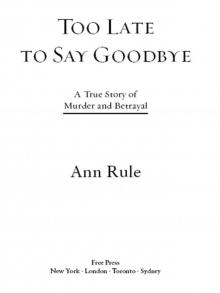 Too Late to Say Goodbye: A True Story of Murder and Betrayal
Too Late to Say Goodbye: A True Story of Murder and Betrayal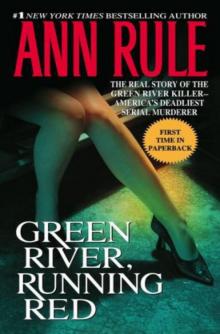 Green River, Running Red
Green River, Running Red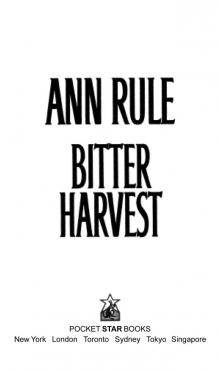 Bitter Harvest
Bitter Harvest Dead by Sunset: Perfect Husband, Perfect Killer?
Dead by Sunset: Perfect Husband, Perfect Killer?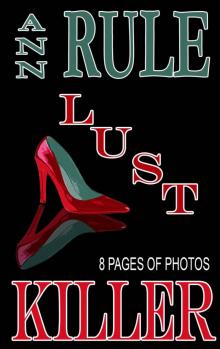 Lust Killer
Lust Killer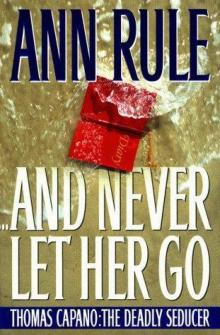 And Never Let Her Go: Thomas Capano: The Deadly Seducer
And Never Let Her Go: Thomas Capano: The Deadly Seducer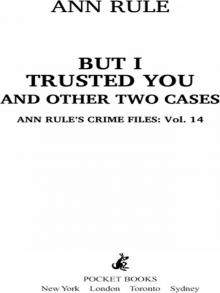 But I Trusted You and Other True Cases
But I Trusted You and Other True Cases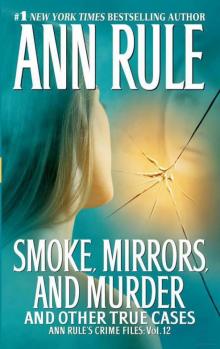 Smoke, Mirrors, and Murder and Other True Cases
Smoke, Mirrors, and Murder and Other True Cases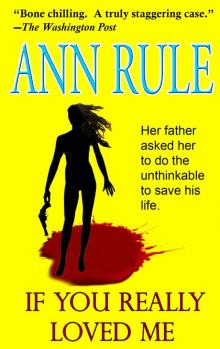 If You Really Loved Me
If You Really Loved Me Kiss Me, Kill Me and Other True Cases
Kiss Me, Kill Me and Other True Cases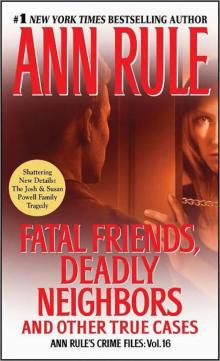 Fatal Friends, Deadly Neighbors and Other True Cases
Fatal Friends, Deadly Neighbors and Other True Cases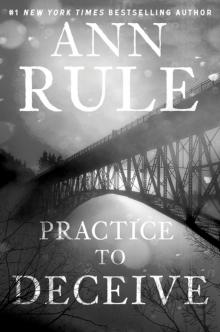 Practice to Deceive
Practice to Deceive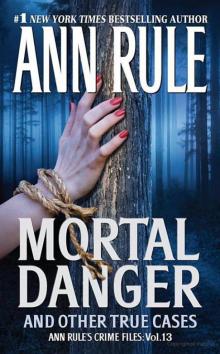 Mortal Danger and Other True Cases
Mortal Danger and Other True Cases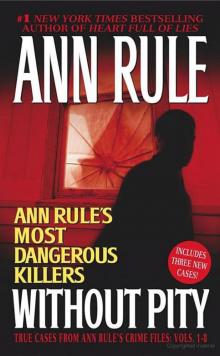 Without Pity: Ann Rule's Most Dangerous Killers
Without Pity: Ann Rule's Most Dangerous Killers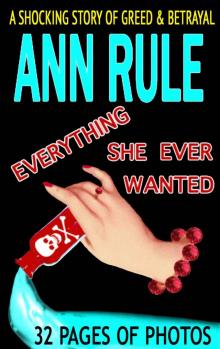 Everything She Ever Wanted
Everything She Ever Wanted A Fever in the Heart and Other True Cases
A Fever in the Heart and Other True Cases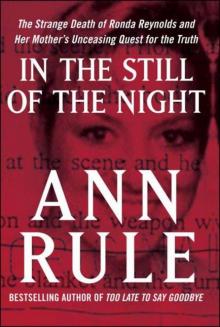 In the Still of the Night
In the Still of the Night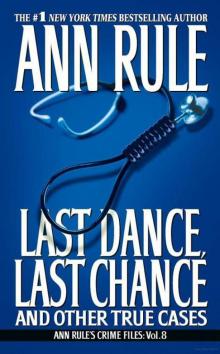 LAST DANCE, LAST CHANCE - and Other True Cases
LAST DANCE, LAST CHANCE - and Other True Cases A Rage to Kill
A Rage to Kill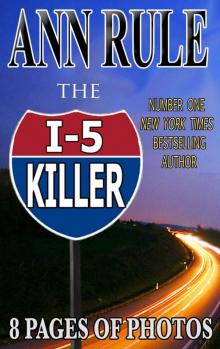 The I-5 Killer
The I-5 Killer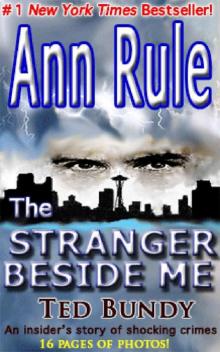 The Stranger Beside Me
The Stranger Beside Me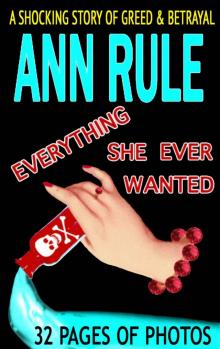 Everything She Ever Wanted: A True Story of Obsessive Love, Murder, and Betrayal
Everything She Ever Wanted: A True Story of Obsessive Love, Murder, and Betrayal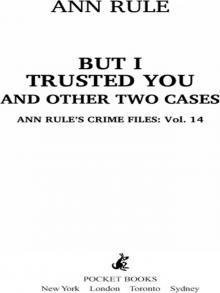 But I Trusted You
But I Trusted You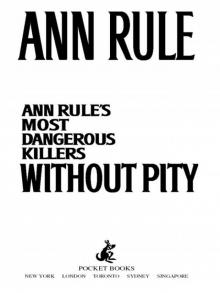 Without Pity
Without Pity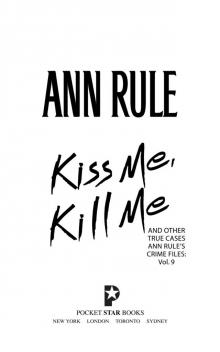 Kiss Me, Kill Me
Kiss Me, Kill Me Too Late to Say Goodbye
Too Late to Say Goodbye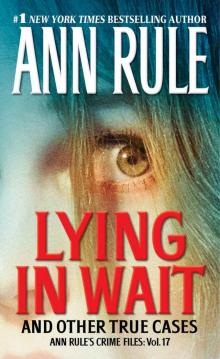 Lying in Wait
Lying in Wait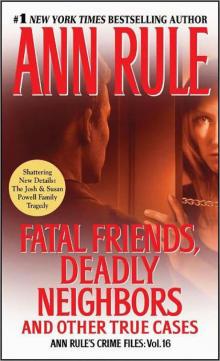 Fatal Friends, Deadly Neighbors
Fatal Friends, Deadly Neighbors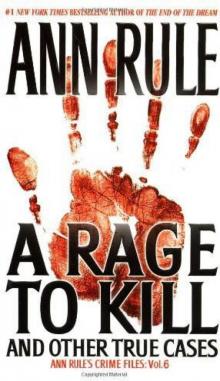 A Rage to Kill: And Other True Cases
A Rage to Kill: And Other True Cases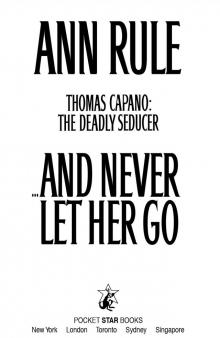 And Never Let Her Go
And Never Let Her Go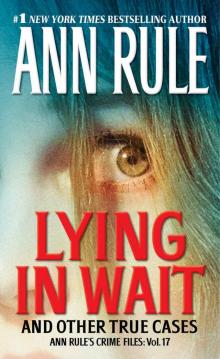 Lying in Wait Ann Rule's Crime Files Vol.17
Lying in Wait Ann Rule's Crime Files Vol.17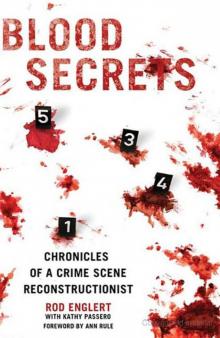 Blood Secrets: Chronicles of a Crime Scene Reconstructionist
Blood Secrets: Chronicles of a Crime Scene Reconstructionist No Regrets
No Regrets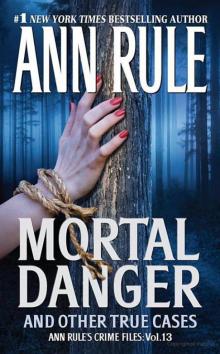 Mortal Danger
Mortal Danger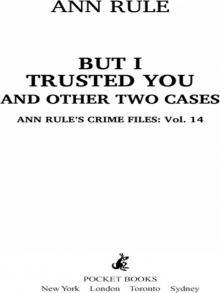 But I Trusted You: Ann Rule's Crime Files #14
But I Trusted You: Ann Rule's Crime Files #14 Empty Promises
Empty Promises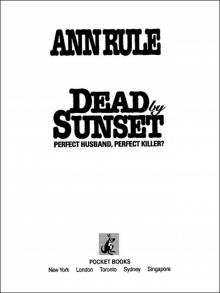 Dead by Sunset
Dead by Sunset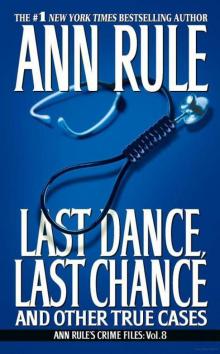 Last Dance, Last Chance
Last Dance, Last Chance Don't Look Behind You
Don't Look Behind You